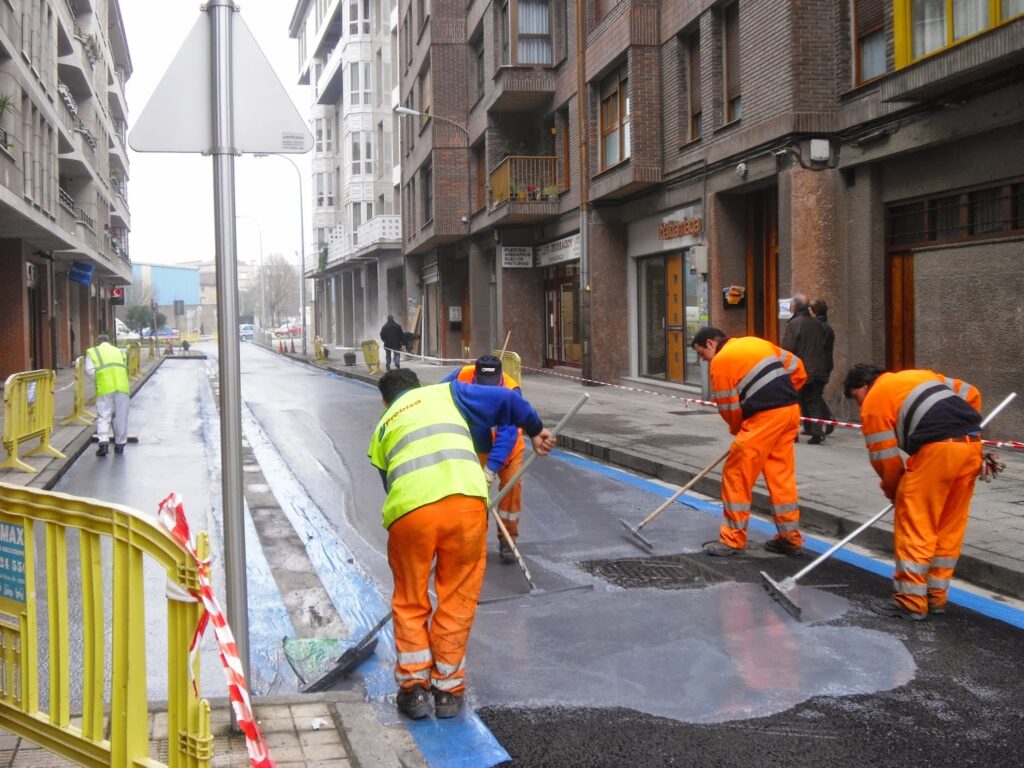The Department for Environment and Sustainability at IK4-AZTERLAN has taken part in the activity programme to mark European Mobility Week in Durango. Under the slogan “Clean air – it´s your move!”, the event has focused on the importance of reducing pollution emitted by motor vehicles, especially in urban areas.
The week has been celebrated all over Europe with the aim of promoting a high-quality, sustainable model for local mobility. The objectives set previously were fulfilled: encourage positive attitudes and maximize participation from citizens.
Urban air quality is directly related to car mobility, therefore our current dependency on the car can generate pollution in schools, sport areas and any space close to roads. The poor air quality that Durango presented in previous years led local authorities to take an active role in this matter. IK4-Azterlan worked alongside institutions to improve urban mobility.
Even though sulphur dioxide (SO2) and carbon monoxide (CO) are two pollutants associated with traffic emissions, the air quality studies carried out reveal that traffic is characterized by three main indicators:
1.- Ultrafine particulate matter
Also known as PM1, these particles are smaller than 1 µm and are the most harmful for human health, because they can enter in the alveoli of the lungs and interfere with the exchange of gases to and from the bloodstream.
These particles are produced by combustion engines and are mainly composed of carbonaceous material. They are small volumes of fuel which have not been consumed and their emissions are directly related to engine efficiency.
2.- Thick particulate matter
These are particles between 2.5 and 10 µm long and, even though the respiratory system has defence mechanisms, they can be very harmful for those who suffer chronic breathing diseases.
In this case, the particles are not from exhaust pipes, but from the re-suspension of the particles left on the road surface. This phenomenon related to traffic flow is composed of leftovers from tyres, brakes, treads and all types of particles than can be left on the road.
3.- Nitrogen Monoxide (NO)
It is a primary pollutant emitted by atmospheric combustion engines. Motor engines receive the oxygen required for combustion from the atmosphere, and it is returned as NO, an agent which can irritate the eyes and the respiratory system causing coughing, shortness of breath and nausea.
For controlling urban air quality and evaluating the impact created by traffic, the control methodology applied by IK4-Azterlan was based on the in situ measurement of air quality indicators (particles and gases), as well as traffic flow.
Once the negative effects from traffic were identified, the key steps for the reduction were focused towards the search for solutions that would improve mobility in the area-, designing pedestrian areas, one way roads, speed limits, bike sharing -, which should result in the reduction of emissions without increasing them in other areas.
Technological solutions
Nevertheless, there are situations where due to the city design and dense traffic flow, it is not possible to apply actions towards improving mobility. The only solution in these cases is to use technological solutions orientated towards cleaning pollutants. The highlight of the pioneering case in Euskadi lies in the environmental field work carried out on a road in Durango with heavy traffic flow: the application of a photocatalytic tarmac for NOX air decontamination.
It is a cutting edge project because it is the first time a photocatalytic material used to reduce atmosphere pollution has been evaluated on an urban scale. The results obtained underline the efficiency of the material used in Montevideo Avenue, with a reduction of 50 percent in NOX concentration, very different from the results that this product presented in the laboratory.
This is the reason for the work, both present and future, carried out by the Technological Centre into studying how this material reacts in the face of various external factors such as weather, dirtiness, wear or ageing of the material.

Noxer applitacion in Durango


